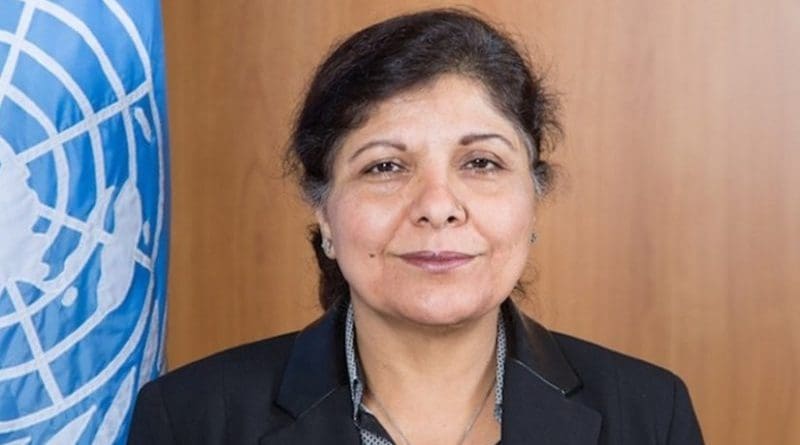Migrants Shape A Better Asia And Pacific – If We Let Them – OpEd
By Dr. Shamshad Akhtar and Ambassador William Lacy Swing
Over land, by air and by sea, the people of Asia and the Pacific are on the move – this is the finding of the forthcoming Asia-Pacific Migration Report, the result of United Nations research led by the United Nations Economic and Social Commission for Asia and the Pacific (ESCAP) and the International Organization for Migration. More than 59 million migrants lived in receiving countries of the Asia-Pacific region in 2013, while the number of people migrating from countries of the region has doubled since 1990, reaching more than 95 million. Their destinations vary, but include countries such as Singapore, Thailand, Malaysia, the Russian Federation and Kazakhstan, as well as countries further afield in the Middle East, Europe and North America.
The factors underlying these mass movements of men, women and children vary. Many migrant workers leave home to seek jobs or higher wages in the growing economies of South-East Asia or the oil-rich countries of the Middle East. Others are refugees fleeing violence and persecution, stateless people trying to find dignity and recognition, or students hoping to access educational opportunities not available in their own countries.
People move using formal channels where possible, but informal, irregular ones where they cannot. Irregular migrants are at risk from people smugglers, who pack them onto overcrowded and unsafe boats; traffickers and unscrupulous employers, who exploit them for profit; and authorities who do not recognize that even if some irregular migrants may have broken laws, they are all still human beings with rights.
Migrants risk isolation, xenophobia, and abuse – and yet, still they come. Why? Because despite all of these risks, migration is the single best opportunity for many people to improve not only their own lives but also those of their families and communities. The remittances they send – Asia-Pacific countries received more than $249 billion in remittances in 2015 alone – lift people out of poverty, feed children, pay for their health and education, and help to build resilient homes and communities.
But we should always remember that migrants move not only for their own benefit. They are also responding to needs in countries of destination for labour. When they arrive, they work, generating wealth, expanding GDP, sometimes even sustaining industries. This is as true for those at the low end of the skill spectrum as for doctors, engineers and innovators.
This point is often overlooked. Instead, migrants are often regarded as problems or turned into scapegoats, accused of “stealing” jobs and depressing wages. In fact, the evidence suggests otherwise; generally, the impacts of migration are positive. If all migrant workers were to leave Thailand, for example, the GDP would shrink by 0.75 per cent. A ten per cent increase in the number of labour migrants in Malaysia actually raises the employment of national workers by one per cent, often releasing them to access better-paid, higher-skilled jobs.
This is not to deny the real challenges that migration can bring. Some national workers at the lower end of the labour market may find their wages depressed and employment opportunities reduced – but only slightly. This is not an effect of migration, but rather a result of the social and economic conditions that kept these people in vulnerable, low-paid employment in the first place, and which enable the exploitation of migrant workers.
The best way to ensure that migration supports development is to enable people to migrate in a regular way, with dignity and respect for their rights, to meet labour market needs. The alternative of vulnerable migrant workers is not only contrary to the values of human rights, it also means that national workers are vulnerable too.
We should use the opportunity of International Migrants Day, on 18 December, to recognize, celebrate and facilitate the contribution that migrants make to the development of countries in Asia and the Pacific. Let us go further, and reject the stereotypes, embrace the evidence, and take the necessary steps to maximize this contribution and prevent negative impacts. In particular, we should lend our support to meeting the challenge set in the new Sustainable Development Goals: to build a new migration system that enables people to move safely and prevents abuse for the benefit of all.
*About the authors:
Dr. Shamshad Akhtar is an Under-Secretary-General of the United Nations and Executive Secretary of the Economic and Social Commission for Asia and the Pacific (ESCAP). She has been the UN’s Sherpa for the G20 and previously served as Governor of the Central Bank of Pakistan and Vice President of the MENA Region of the World Bank.
Ambassador William Lacy Swing is the Director-General of the International Organization for Migration. He has previously served as Special Representative of the Secretary-General for the Democratic Republic of the Congo, and Special Representative of the Secretary-General for Western Sahara

